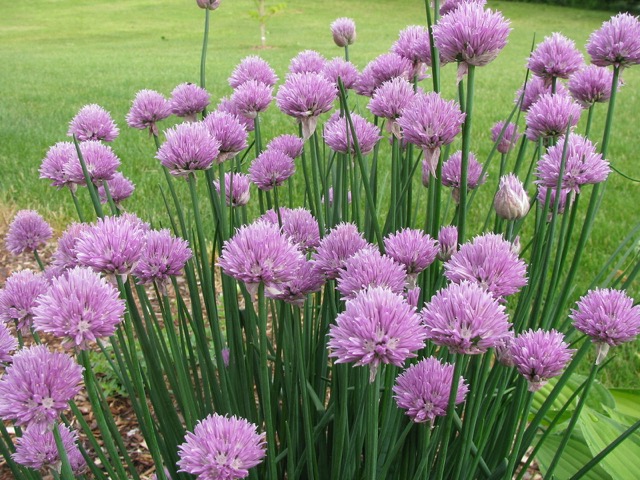Allium shoenoprasum L.
Chives is a widely cultivated perennial herb, related to the onion, with pale purple flowers and tufts of long slender and hollow tubular leaves used as a culinary herb. It belongs to the genus Allium together with garlic, shallots, onions and leeks.
The flowers are borne on hollow, tubular and slender flowering stalks known as scapes and grow up to 20-inches (50cm long).

Chives naturally occurs in Europe, Asia and N America and is a native to both new and old worlds.
Culinary Use of Chives
Chives are best snipped with scissors because they are very delicate.
They are added to fresh preparations like salads, or at the end of cooking for garnish and flavour.
In cooking, chives are used in soups, stocks or stews; fish and potato dishes; omelettes and soft scrambled eggs; savoury pancakes, egg mayonnaise sandwiches and creamy sauces.
For garnish: they are used for prosciutto bundles, deviled eggs, potato dishes and salads.
Chive flowers are edible and are used as a garnish especially in salads or fresh preparations.
Chives are popularly used in European cookery for example in Poland it’s served with quark or in the Traditional Swedish sauce, gräddfil, served with a traditional herring dish.
Chives, Nutrition Facts
100g (3.5oz) chives provides 126 calories and contains the following:
Fat: 0.73g
Cholesterol: 0g
Sodium:
Carbohydrate: 4.35g (sugar 1.85g, Fibre 2.5g);
Protein: 3.27g;
Recommended Daily Allowance. minerals (RDA): Iron 12%, Manganese (18%) and Magnesium (12%);
Recommended Daily Allowance, Vitamins: K (203%); C (70%); A 27% ; Beta Carotene (24%), Folate (B9) (26%),
Availability of Chives
Fresh chives are widely available in supermarkets all year round in the vegetable section. They can also be found in garden centres. They are in season throughout spring to summer.
Storage of Chives
Keep refrigerated in the vegetable crisper for 3-4 days.
Other Uses
The chives plant is also used as an ornamental. The violet flowers are used to make ornamental dry bouquets.
myfavouritepastime.com
